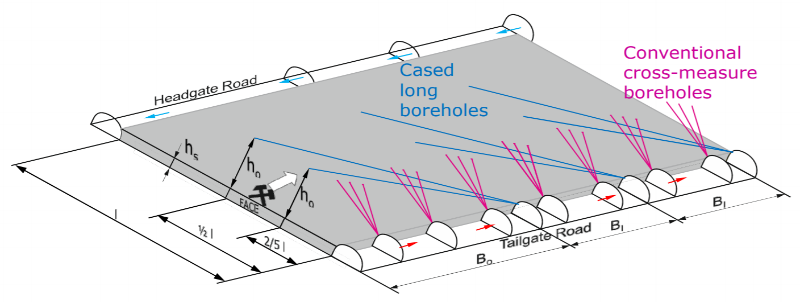
AGH University of Science and Technology: Long-term Efforts to Reduce Methane Emissions from Coal Mines

Reduction Methane Emission (RME) Research Group at the AGH University of Science and Technology, Faculty of Mining and Geoengineering, Department of Environmental Engineering, in Kraków, Poland is working to reduce methane emissions from coal mines by: 1) preparing and implementing methods to decrease methane emissions during coal production, and 2) monitoring methane emissions from ventilation shafts at the local and regional scale. RME’s efforts have focused on the Upper Silesian Coal Basin (USCB), which contains highly concentrated methane emissions that make it an ideal location for comparing surveys of various scales and methodologies (ground-based, airborne, and satellite).
Preparing and Implementing Methods to Decrease Methane Emissions during Coal Production
To reduce methane emissions during coal production, RME Research Group developed a method to improve methane drainage efficiency during coal seam gas extraction.
The method, illustrated in the diagram below, involves using long-piped drainage boreholes drilled from the tailgate road to the stress relief zone above the goaf (the waste remaining in old mine workings) of the longwall panel. These drainage holes are cased with perforated pipes and are drilled from the tailgate road into roof layers together with traditional fan-shaped cross-measure boreholes. Two cased boreholes capture the methane gas from the fractured zone above the caving zone. These boreholes drain high concentrations of methane until the longwall face has advanced below the existing borehole at a distance of up to 5 times the height of the face. At this time, the boreholes are disconnected from the main pipeline in the tailgate road, and the next two cased boreholes are connected to the pipeline.
This method was presented at the 11th meeting of the United Nations Economic Commission for Europe (UNECE) Group of Experts on Coal Mine Methane in Geneva from 24-25 October 2016.

Diagram of Methane Drainage Method using Cased Long Boreholes.
Monitoring Methane Emissions from Ventilation Shafts at the Local and Regional Scale
The RME Research Group collaborated with scientists from the AGH University of Science and Technology Carbon Dioxide and Methane Team to measure methane emissions using aircraft. The aircraft “missions” combine active airborne lidar and passive remote sensors (spectrometers) with in-situ instruments that are mounted to the aircraft.
An initial measurement mission was conducted in August 2017, which was followed by additional campaigns from 14 May to 13 June 2018. Methane emissions measurements were obtained at 8 coal mines containing 17 ventilation shafts in the area of the USCB. Measurements taken during the campaigns were the first attempt to observe short-term methane emissions directly from the source ventilation shaft, and they provided methane concentration data at the regional scale. Historically, short-term methane emission data from coal mines were not accessible worldwide and were only available annually. Results obtained from this approach are effective at obtaining short-term emissions data and can also be used to help validate satellite measurements of atmospheric methane.